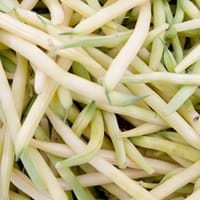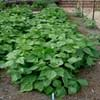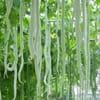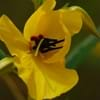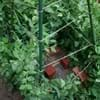Origin
Central America, South America
Central America, South America
Types
Bush Beans, Pole Beans
not available
Number of Varieties
Not Available
Habitat
Cultivated Beds
All sorts of environments
USDA Hardiness Zone
Not Available
Not Available
AHS Heat Zone
Not Available
Not Available
Sunset Zone
A1, A2, A3, H1, H2, 1a, 1b, 2a, 2b, 3a, 3b, 4, 5, 6, 7, 8, 9, 10, 11, 12, 13, 14, 15, 16, 17, 18, 19, 20, 21, 22, 23, 24
A1, A2, A3, H1, H2, 1a, 1b, 2a, 2b, 3a, 3b, 4, 5, 6, 7, 8, 9, 10, 11, 12, 13, 14, 15, 16, 17, 18, 19, 20, 21, 22, 23, 24
Habit
Vining/Climbing
Vining/Climbing
Flower Color
Lavender
White, Light Pink, Lavender
Flower Color Modifier
Bicolor
Bicolor
Fruit Color
Purple
Light Yellow, Light Green
Leaf Color in Spring
Green, Purple
Green, Dark Green
Leaf Color in Summer
Green
Green, Dark Green
Leaf Color in Fall
Green
Green, Dark Green
Leaf Color in Winter
Not Available
Green, Dark Green
Leaf Shape
Oval
Heart-shaped
Plant Season
Spring, Summer, Fall
Spring, Summer, Fall
Sunlight
Full Sun
Full Sun
Type of Soil
Loam, Sand
Loam, Sand
The pH of Soil
Neutral, Alkaline
Neutral, Alkaline
Soil Drainage
Well drained
Well drained
Bloom Time
Indeterminate
Indeterminate
Tolerances
Drought
Drought
Where to Plant?
Container, Ground, Pot
Container, Ground
How to Plant?
Seedlings
Seedlings
Plant Maintenance
Medium
Medium
Watering Requirements
Do Not over Water, Requires regular watering, Water evenly
Do not let dry out between waterings, Use Mulches to help prevent water loss during hot and windy weather
In Summer
Lots of watering
Lots of watering
In Spring
Moderate
Moderate
In Winter
Average Water
Average Water
Soil pH
Neutral, Alkaline
Neutral, Alkaline
Soil Type
Loam, Sand
Loam, Sand
Soil Drainage Capacity
Well drained
Well drained
Sun Exposure
Full Sun
Full Sun
Pruning
Remove damaged leaves, Remove dead branches, Remove dead leaves
Remove damaged leaves, Remove dead branches, Remove dead leaves
Fertilizers
5-10-10 fertilizer
All-Purpose Liquid Fertilizer
Pests and Diseases
Alternaria Leaf Spot, Anthracnose, Aphids, Armyworm, Bacterial Blight
Not Available
Plant Tolerance
Drought
Drought
Flower Petal Number
Single
Single
Foliage Texture
Coarse
Coarse
Foliage Sheen
Matte
Matte
Attracts
Not Available
Aphids, Birds, Butterflies, Caterpillar
Allergy
Not Available
Diarrhea, Irritation to stomach
Aesthetic Uses
Not Available
Not Available
Beauty Benefits
Beautiful Skin
Making cosmetics, Remove blemishes
Environmental Uses
Fixes Nitrogen
Food for animals, No fertilizer, pesticides, or herbicides needed
Medicinal Uses
Cancer, Diuretic, Homeopathy, Hypotensive, Miscellany
Acne, Diuretic, Emmoiliant, Menstrual Disorders
Part of Plant Used
Leaves, Seedpod, Seeds
Fruits
Other Uses
Used for making brown dye, Used in biomass, Used in in reviving woollen fabrics
Animal Feed, Used as a nutritious food item
Used As Indoor Plant
Yes
Yes
Used As Outdoor Plant
Yes
Yes
Garden Design
Container, Edible, Herb, Vegetable, Vine
Edible, Herb, Vegetable, Vine
Botanical Name
PHASEOLUS vulgaris 'Purple King'
PHASEOLUS vulgaris 'Gold of Bacau'
Common Name
String bean, Field bean, French bean
common bean
In Hindi
String Bean
बाकला
In German
Bohne
Gartenbohne
In French
Haricot vert
Haricot
In Spanish
String Bean
Phaseolus vulgaris
In Greek
Αμπελοφάσουλο
Phaseolus vulgaris
In Portuguese
Feijão de corda
Feijão
In Polish
Fasolka szparagowa
Fasola zwykła
In Latin
Gloria Bean
wax bean
Phylum
Magnoliophyta
Spermatophyta
Class
Magnoliopsida
Magnoliopsida
Genus
Phaseolus
Phaseolus
Clade
Angiosperms, Eudicots, Rosids
Dicotyledonous
Tribe
Phaseoleae
Not Available
Subfamily
Faboideae
Not Available
Number of Species
Not Available
Importance of String Bean and Wax Bean
Want to have the most appropriate plant for your garden? You might want to know the importance of String Bean and Wax Bean. Basically, these two plants vary in many aspects. Compare String Bean and Wax Bean as they differ in many characteristics such as their life, care, benefits, facts, etc. Every gardener must at least have the slightest clue about the plants he wants to plant in his garden. Compare their benefits, which differ in many ways like facts and uses. The medicinal use of String Bean is Cancer, Diuretic, Homeopathy, Hypotensive and Miscellany whereas of Wax Bean is Acne, Diuretic, Emmoiliant and Menstrual Disorders. String Bean has beauty benefits as follows: Beautiful Skin while Wax Bean has beauty benefits as follows: Beautiful Skin.
Compare Facts of String Bean vs Wax Bean
How to choose the best garden plant for your garden depending upon its facts? Here garden plant comparison will help you to solve this query. Compare the facts of String Bean vs Wax Bean and know which one to choose. As garden plants have benefits and other uses, allergy is also a major drawback of plants for some people. Allergic reactions of String Bean are Not Available whereas of Wax Bean have Diarrhea and Irritation to stomach respectively. Having a fruit bearing plant in your garden can be a plus point of your garden. String Bean has showy fruits and Wax Bean has showy fruits. Also String Bean is not flowering and Wax Bean is not flowering . You can compare String Bean and Wax Bean facts and facts of other plants too.

